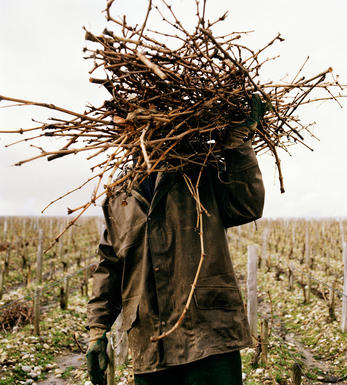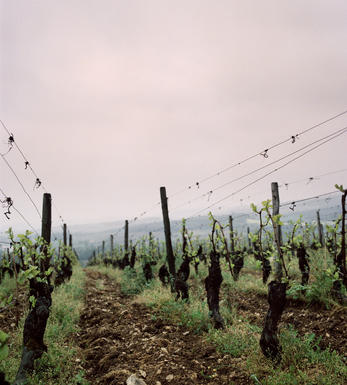
2016 Bourgogne Rouge, Domaine Hudelot-Baillet, Burgundy

About this WINE

Domaine Hudelot-Baillet
Joel Hudelot-Baillet took over from his father Paul Hudelot in 1981, the domaine having originally been established several years earlier. Joel retired in 2004, making way for his son-in-law Dominique Leguen, originally a Breton, who had been working at the domaine since 1998. The domaine has come forward by leaps and bounds since. Everything is now bottled at the domaine, from lower yields in vineyards looked after on the lutte raisonée system.
The grapes are sorted before being destemmed, but not crushed, then given a cool pre-maceration for around 8 days. Dominique Leguen starts with punching down but thereafter moves to pumping over, and also likes to use a delestage which he feels is good for extracting tannins from the skins rather than the pips. The premier and grand cru wines receive 50% new oak and 50% one year old barrels.
Big strides have been made since the change of generation. The wines are now relatively deep coloured, full of fruit, powerful, yet still fine.
Jasper Morris MW, Burgundy Wine Director and author of the award-winning Inside Burgundy comprehensive handbook.

Bourgogne Rouge
Bourgogne Rouge is the term used to apply to red wines from Burgundy that fall under the generic Bourgogne AOC, which can be produced by over 350 individual villages across the region. As with Bourgogne Blanc and Bourgogne Rosé, this is a very general appellation and thus is hard to pinpoint any specific characteristics of the wine as a whole, due to the huge variety of wines produced.
Around 4,600 acres of land across Burgundy are used to produce Bourgogne Rouge, which is around twice as much as is dedicated towards the production of generic whites.
Pinot Noir is the primary grape used in Bourgogne Rouge production, although Chardonnay, Pinot Blanc, Pinot Gris and in Yonne, César grapes are all also permitted to make up the rest of the wine. These wines tend to be focused and acidic, with the fruit less cloying than in some New World wines also made from Pinot Noir, and they develop more floral notes as they age.
Although an entry-level wine, some Bourgogne Rouges can be exquisite depending on the area and producer, and yet at a very affordable price.

Pinot Noir
Pinot Noir is probably the most frustrating, and at times infuriating, wine grape in the world. However when it is successful, it can produce some of the most sublime wines known to man. This thin-skinned grape which grows in small, tight bunches performs well on well-drained, deepish limestone based subsoils as are found on Burgundy's Côte d'Or.
Pinot Noir is more susceptible than other varieties to over cropping - concentration and varietal character disappear rapidly if yields are excessive and yields as little as 25hl/ha are the norm for some climats of the Côte d`Or.
Because of the thinness of the skins, Pinot Noir wines are lighter in colour, body and tannins. However the best wines have grip, complexity and an intensity of fruit seldom found in wine from other grapes. Young Pinot Noir can smell almost sweet, redolent with freshly crushed raspberries, cherries and redcurrants. When mature, the best wines develop a sensuous, silky mouth feel with the fruit flavours deepening and gamey "sous-bois" nuances emerging.
The best examples are still found in Burgundy, although Pinot Noir`s key role in Champagne should not be forgotten. It is grown throughout the world with notable success in the Carneros and Russian River Valley districts of California, and the Martinborough and Central Otago regions of New Zealand.


Buying options
Add to wishlist
wine at a glance
Delivery and quality guarantee